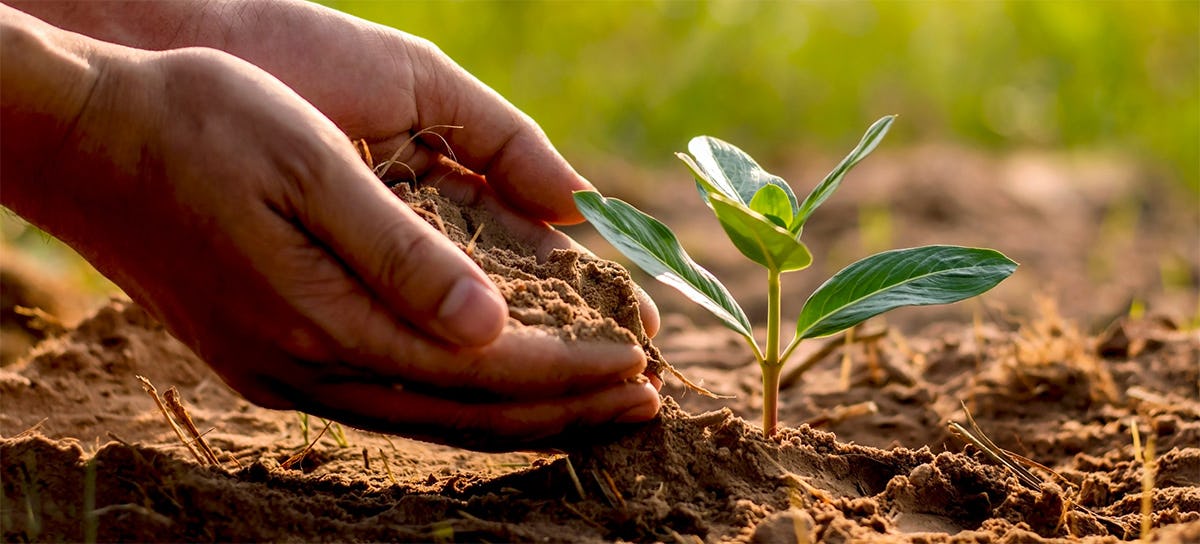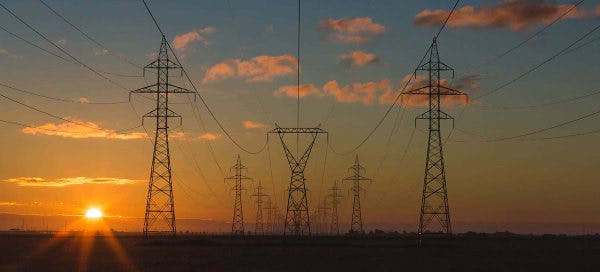Let's separate facts from fiction and reveal common sustainability myths and important facts, for a happier and healthier planet.
Sustainability is a big buzzword these days. And like any buzzword, there are a host of misconceptions about what it means and how you can get involved—and if you even should.
Here at Rhythm, we’re big on making sustainability accessible to everyone, so we’ve pulled together a list of eight overblown myths that need to be busted with cold, hard facts.
Myth 1: You Shouldn’t Use Any Plastic – Ever
The Facts:
You may think that sustainability is mainly about forgoing all plastic products or packaging. But at this point, plastic is so pervasive that avoiding it entirely is nearly impossible.
At an individual level, it’s important to reduce plastic consumption wherever possible, to reuse plastic when it makes sense to do so and to recycle if there is no other use for that plastic.
Myth 2: There Isn’t Enough (Renewable) Energy to Go Around
The Facts:
Renewable sources like wind, hydro, and solar power have the potential to replace fossil fuels… just not as quickly or as smoothly as some would like. Critics point out that the operating costs of renewables are quite high in comparison to natural gas plants; that solar power needs to cover a lot of real estate to generate enough energy to power entire countries; and that revamping our current infrastructure to support more renewables will cost a lot of money. These are all valid criticisms!
The truth is that the technology and methodology to make renewables capable of supporting the global power supply is still developing. So, it’s important that proponents of renewable energy think outside of the box and find ways to solve these problems. For example: instead of clearing new land to build solar panels, a pilot project Gujarat district in India built solar panels over their irrigation canals—collecting energy from the sun and saving several thousands of gallons of water from evaporating. Pretty cool, eh?
Source:
https://www.friendsofscience.org/assets/documents/Renewable-energy-cannot-replace-FF_Lyman.pdf
https://www.bbc.com/future/article/20200803-the-solar-canals-revolutionising-indias-renewable-energy
Myth 3: Planting a Trillion Trees Will Fix the Earth
The Facts:
You may have heard that planting half a trillion trees will end climate change. But that’s a big oversimplification.
First, where trees are planted matters. Tropical forests are the ones that capture and sequester the most carbon. Boreal forests, or those in more northern latitudes, either have no cooling effect or make things slightly warmer—counterintuitive, we know.
Plus, trees are not the only green things that have a positive effect on the atmosphere. Shrubs and mosses are often more effective at filtering pollutants from the air than trees, while climbing vines on the outside of a building can cool its interior.
Reforesting efforts in the Amazon rainforest and other tropical zones will influence global warming, but it’s only one part of the solution. Individuals and societies also need to utilize tactics and technology to tackle the problem at the source and reduce greenhouse gas emissions.
Source:
https://www.scientificamerican.com/article/tropical-forests-cool-earth/
https://phys.org/news/2021-02-hedge-effective-filtering-automobile-air.html
https://www.greenmatters.com/news/2017/06/09/Z2olvgK/moss-clean-wall
Myth 4: Recycling is Pointless Because it Ends Up in a Landfill Anyway
The Facts:
This is a big one, and it can be hugely discouraging for folks who are trying to live sustainably because, as we mentioned above, it’s almost impossible to eliminate plastic from our lives.
Think about this statistic: in 2013, the amount of recycled and composted material in the US prevented the release of about 186 million metric tons of carbon dioxide. That’s like keeping 39 million cars from driving for a year. That’s an actual impact!
While it’s true that recycling systems are imperfect, continuing to recycle will demonstrate that there is a demand, and that demand will drive innovation. You can do your part by first reducing the amount of plastic you use, and then making sure you only place items in your recycling that your local facility can process.
Source:
Myth 5: Individual Choices Can’t Make a Difference
The Facts:
While a single individual’s choices may not solve the climate crisis, they are still part of a collective solution. After all, the planet we’re working to preserve is not a single entity—it’s an intimately interconnected system made of millions of moving parts, and you are one of them!
Reducing the size of your footprint and influencing others around you to do the same will have a bigger impact than you think. For instance, in the US, the per capita greenhouse gas emissions is 19 tons. Changing some of your habits can keep several tons of gas out of the atmosphere, and that’s no small thing. Concentrate on what you can do, and you’ll find yourself encouraged by how much that really is!
Source:
Myth 6. Using New Technology is the Only Way to Live More Sustainably
The Facts:
While new technology is creating exciting innovations in sustainability, it isn’t necessarily where we should start, especially in our daily lives.
When you have a sustainability problem right in front of you, start with what you’ve got. Think about things you can do today, such as:
Maximize your car’s fuel efficiency (proper tire inflation, anyone?)
Turn off the lights when you leave a room
Run your dishwasher instead of cleaning each dish by hand (yes, it really is more efficient!)
Repair clothes when possible, instead of replacing them
Borrow things instead of buying them
- You can think of these small things as “sustainability hacks”—little cheat codes for our lives that are quick and easy to implement with the resources, tools, and materials we already have at hand. Source:
https://sustainability.ncsu.edu/blog/changeyourstate/life-hacks-for-living-sustainably/
https://medium.com/climate-conscious/8-quick-sustainability-hacks-you-can-easily-bring-into-your-everyday-life-ef117256c189
Myth 7: When Appliances are Off, They Don’t Use Power
The Facts: Even when your appliances are switched off, they still leech power from the grid in small amounts that can really add up, kind of like a leaky faucet. This is referred to as vampire power, and it accounts for up to 23% of energy consumption of the average American household, and up to a quarter of its electric bill. Countrywide, vampire power saps the equivalent of the output of 50 power plants. You can vastly reduce the amount of vampire power being drawn in your home by unplugging appliances when not in use (a power strip will make this more convenient), turning off power-guzzling “quick-start” settings on TV or game console, and letting as many people as possible know about this unwelcome energy-sucking phenomenon. Source:
https://www.nrdc.org/stories/keep-your-devices-wasting-energy-and-money
https://www.treehugger.com/vampire-power-costs-americans-billion-electricity-every-year-4856666
Myth 8: Hybrid Vehicles Are Always a Better Choice
The Facts:
Hybrid cars can produce up to third fewer greenhouse gas emissions than conventional cars…but that’s not the whole story. Any new car, hybrid or otherwise, takes about 113 million BTUs to produce, an amount of energy equal to 1,000 gallons of gasoline. And hybrids also have 30-pound lithium batteries that are very resource-intensive to make and produce gases during the manufacturing process. While a hybrid does produce less air pollution than combustion-only cars during operation, a viable and environmentally responsible alternative would be to buy a used car with good gas mileage. Source:
https://science.howstuffworks.com/science-vs-myth/everyday-myths/does-hybrid-car-production-waste-offset-hybrid-benefits.htm
Let us know what you think by chatting more with us on social media at @gotrhythmhq and leave suggestions on more myths Team Rhythm should bust.




